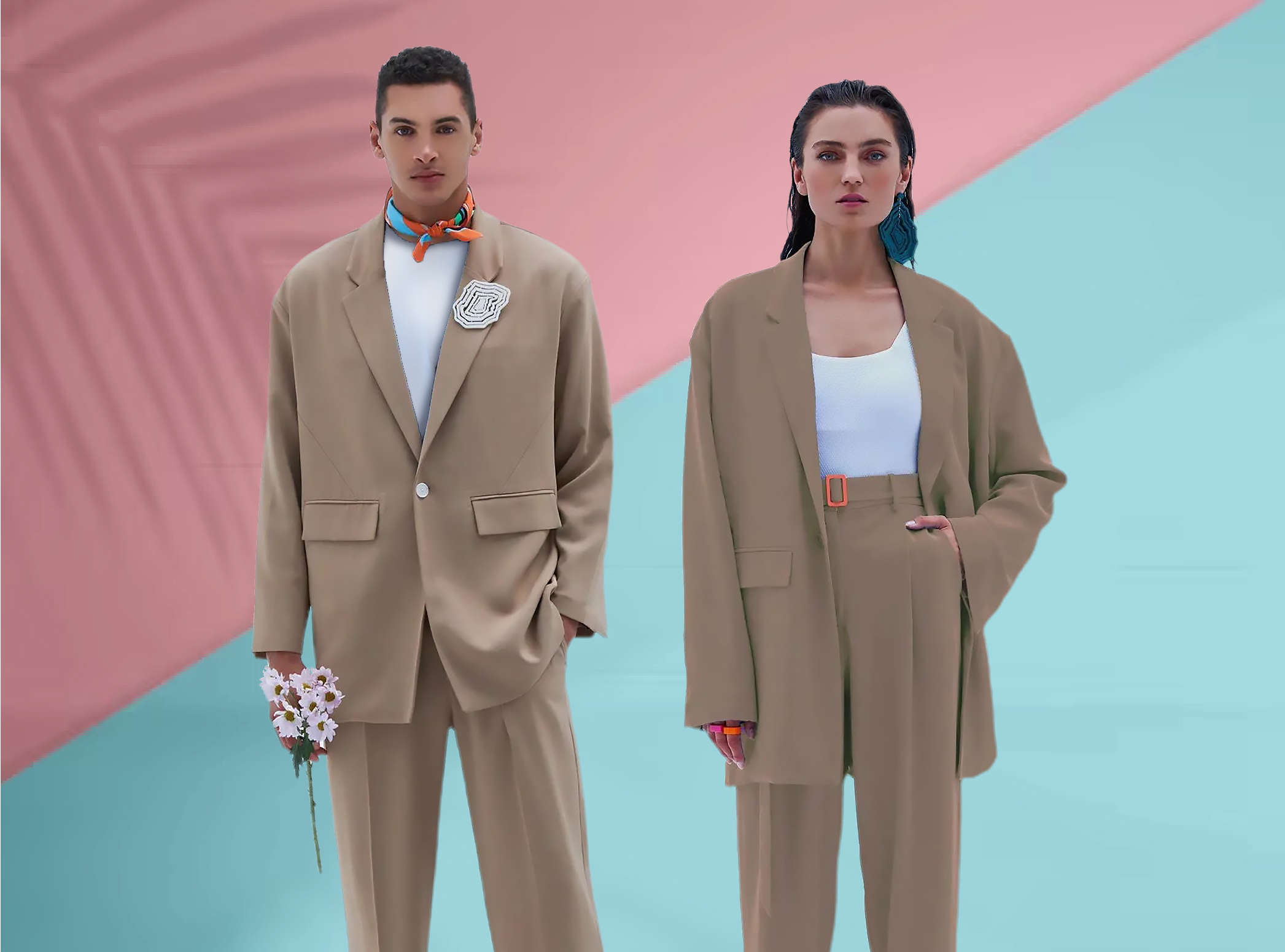The Rise of Gender-Neutral Fashion: Breaking Traditional Norms
Fashion has long been a reflection of societal norms, often dictating the way individuals express themselves through clothing. Traditionally, these norms have been binary, with distinct lines drawn between what is considered masculine and feminine.
However, in recent years, a significant shift has occurred. Gender-neutral fashion is not just a trend; it’s a movement that is challenging and redefining the traditional concepts of masculinity and femininity.  As more people embrace this form of self-expression, the fashion industry is evolving to meet the demands of a world that values individuality over conformity.
As more people embrace this form of self-expression, the fashion industry is evolving to meet the demands of a world that values individuality over conformity.
The Emergence of Gender-Neutral Fashion
The emergence of gender-neutral fashion can be traced back to the growing awareness and acceptance of diverse gender identities. This fashion movement is not about erasing gender but rather about providing an inclusive space where individuals can choose clothing based on personal preference rather than societal expectations.
The idea that clothing should be categorized strictly as 'men’s' or 'women’s' is being challenged, leading to a new era where fashion is fluid and adaptable.
Designers and brands have played a crucial role in this shift. High-end fashion houses and streetwear brands alike are increasingly embracing gender-neutral collections, offering pieces that are not defined by traditional gender norms.
For example, brands like Gucci and Balenciaga have launched collections that feature unisex designs, blurring the lines between what is considered masculine or feminine. This shift is not only changing the way people dress but also how they think about gender as a whole.
Cultural Impact: Redefining Masculinity and Femininity
Gender-neutral fashion is not just a change in clothing style; it is a cultural shift that is redefining the concepts of masculinity and femininity. Traditionally, fashion has been a powerful tool for reinforcing gender roles, with certain colors, cuts, and fabrics being designated as either masculine or feminine. However, as gender-neutral fashion gains traction, these stereotypes are being dismantled.
For instance, the color pink, once strictly associated with femininity, is now being embraced by all genders. Similarly, skirts, traditionally seen as women's clothing, are being worn by men on runways and in everyday life. This shift is not just about aesthetics; it’s about breaking free from the constraints of traditional gender roles and allowing individuals to express themselves authentically.
This movement is particularly significant in the context of the LGBTQ+ community, where gender-neutral fashion has become a means of self-expression and empowerment. By challenging the binary norms of fashion, individuals are reclaiming their identities and asserting their right to dress in a way that reflects who they truly are. This cultural shift is not only influencing fashion but also contributing to broader conversations about gender identity and equality.
The Role of Technology and Social Media in Propelling the Movement
Technology and social media have been instrumental in the rise of gender-neutral fashion. The digital age has provided a platform for marginalized voices, allowing individuals to share their experiences and challenge traditional norms. Social media platforms like Instagram, TikTok, and Pinterest have become hubs for fashion inspiration, where influencers and everyday people alike showcase their gender-neutral style.
These platforms have democratized fashion, making it more accessible and inclusive. No longer confined to the pages of fashion magazines or the runways of Paris and Milan, gender-neutral fashion is now available to anyone with an internet connection. This accessibility has allowed the movement to gain momentum, as people from diverse backgrounds contribute to and shape the conversation around gender and fashion.
Moreover, technology has enabled the creation of innovative fabrics and designs that cater to a more inclusive audience. 3D printing, for example, allows designers to create custom pieces that fit a variety of body types, moving away from the traditional binary sizing system. Virtual fitting rooms and AI-driven recommendations are also making it easier for consumers to find gender-neutral clothing that suits their individual preferences.
The Future of Gender-Neutral Fashion: A Shift Towards Inclusivity
As the fashion industry continues to evolve, gender-neutral fashion is likely to become even more mainstream. The shift towards inclusivity is not just a passing trend; it is a fundamental change in how we think about clothing and self-expression. Brands that fail to recognize this shift risk being left behind, as consumers increasingly seek out options that reflect their values and identities.
In the future, we can expect to see more brands adopting gender-neutral approaches, with entire collections designed without traditional gender distinctions. Retailers will need to rethink the layout of their stores, moving away from the binary men’s and women’s sections to create spaces that are welcoming to all. Additionally, marketing strategies will need to evolve to resonate with a more diverse audience, emphasizing individuality and self-expression over adherence to traditional norms.
The rise of gender-neutral fashion is a powerful reminder that fashion is not just about clothing; it’s about identity, culture, and the freedom to express oneself without constraints. As we move towards a more inclusive world, gender-neutral fashion will continue to play a crucial role in breaking down barriers and challenging the status quo.
Conclusion
The rise of gender-neutral fashion represents a significant cultural shift, one that is redefining how we think about gender and self-expression. By breaking free from traditional norms, this movement is creating a more inclusive and diverse fashion landscape. As society continues to evolve, so too will the ways in which we express ourselves through clothing. Gender-neutral fashion is not just about what we wear; it’s about who we are and the freedom to define ourselves on our own terms.
References
- The Guardian, "The Rise of Unisex Fashion," The Guardian Analysis.
- The New York Times, "Breaking Down Gender Barriers in Fashion," NY Times Article.























































